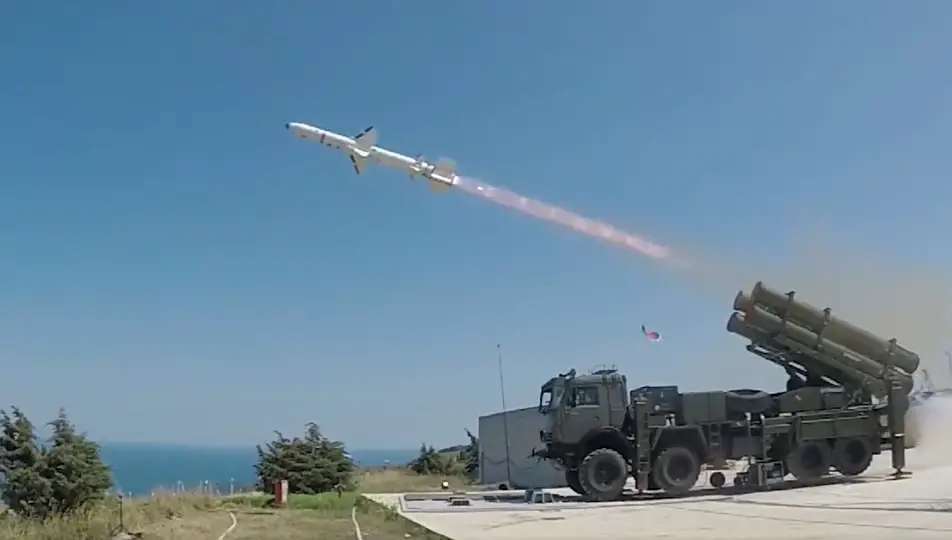Turkey has conducted another successful test-firing of its locally made maritime missile. ATMACA successfully hit a target in the Black Sea after being fired from land in a test that marked the first time the anti-ship missile was tested with a mobile guided missile system. Test activities of the long-range anti-ship missile developed by prominent defense contractor Roketsan were carried out in the northern Sinop province. The Turkish Naval Forces’ inventory currently has the U.S.-made Harpoon anti-ship missiles. ATMACA is touted as a high-precision, long-range, surface-to-surface, precision strike anti-ship missile that can be integrated with patrol boats, frigates and corvettes. They are expected to be replaced by the Atmaca missiles that boast additional superior features.

ATMACA (Accipiter) is effective against fixed and moving targets thanks to its resistance to countermeasures and its target update, reattack and task cancelation capabilities, as well as an advanced 3D routing system. The missile will be powered by a fully indigenous KTJ-3200 engine, developed by Kale Group. The anti-ship missile hovers low above water and can reach its target both on linear and vertical planes. With this feature, the anti-ship missile can reach a higher altitude when it gets closer to the target and can land on a target ship from directly above.

ATMACA is an all weather, long range, precision strike, anti-ship cruise missile, developed by Turkish missile manufacturer ROKETSAN. The missile makes use of its global positioning system (GPS), inertial navigation system, barometric altimeter and radar altimeter to navigate towards its target, while its active radar seeker pinpoints the target with high precision. With a range of more than 220 kilometres (140 mi), this guided missile poses a major threat for targets situated beyond the line of sight due to its high explosive fragmentation warhead. Its modern data-link provides ATMACA with the ability to 3D mission planning, update targets, reattack and terminate the mission. Missile is ultra sea-skimming as it approaches the target.

It boasts a range of more than 200 kilometers (124 miles), posing a threat to targets far outside visual range. It also provides target update, reattack and mission abort capabilities via modern data link. The development of the anti-ship missile began in 2009 and a deal for mass production was signed between the Presidency of Defense Industry (SSB) and prominent defense contractor Roketsan in 2018. Atmaca missiles are expected to be used on corvettes built under Turkey’s National Ship (MILGEM) project, along with other vessels and submarines that currently use Harpoon missiles. The land-based version of the missiles is also expected to be used for littoral security.















